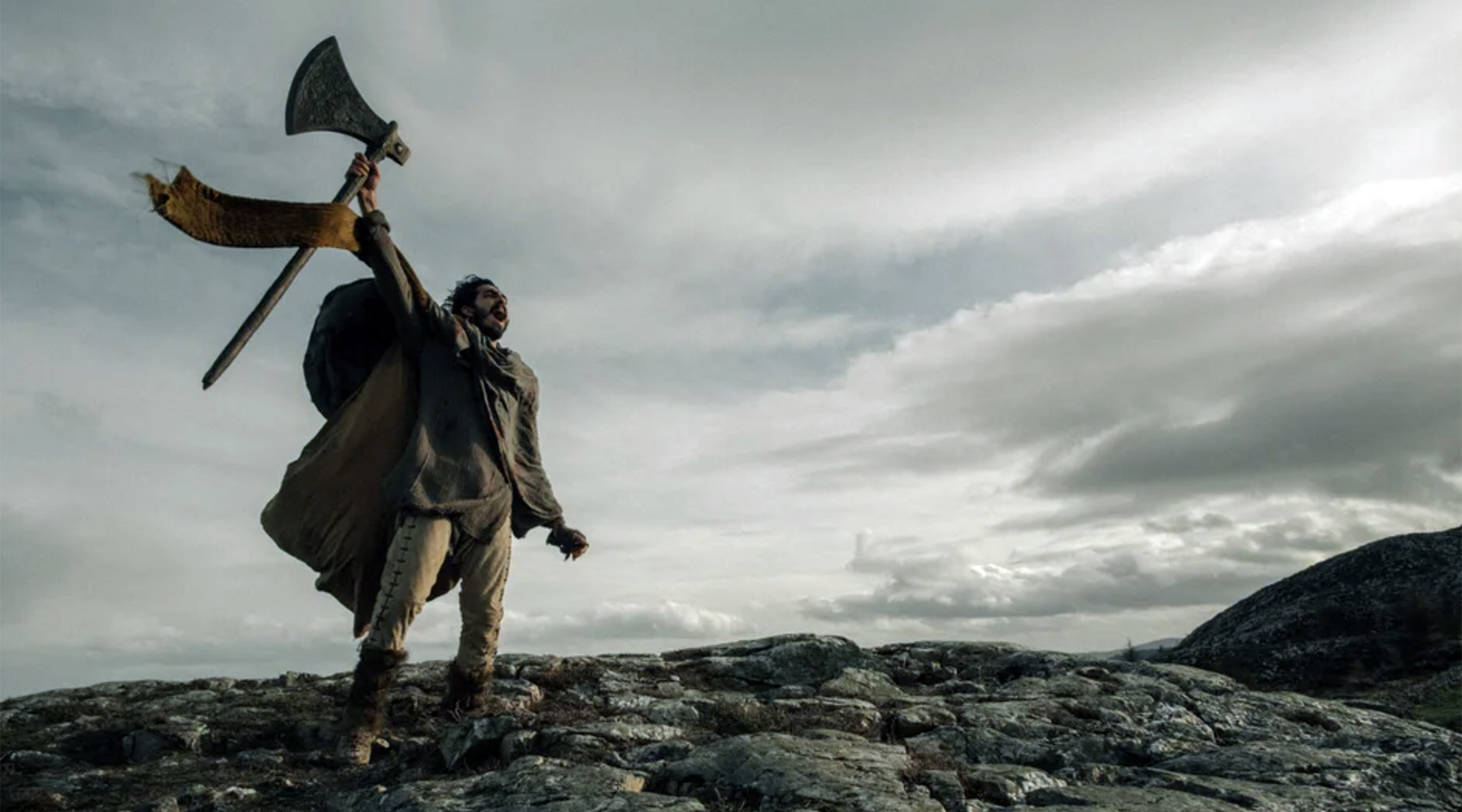On Thursday, August 26, the screening of the fantasy adventure film "The Legend of the Green Knight" begins in Russian cinemas. The project was directed and written by David Lowry, known for his work on such films as "Pete and His Dragon" and "A Ghost Story." Starring Oscar nominee, star of Slumdog Millionaire and Lion Dev Patel.
The film follows the adventures of Sir Gawaine, King Arthur's nephew.
On Christmas Day, the hero makes a dangerous deal with the mysterious Green Knight.
Gawain cuts off the knight's head, as a result of which he becomes a model of courage for those around him.
However, a year and one day later, he will have to appear in the fortress of his revived opponent and repay his debt.
At the appointed time, the hero leaves Camelot and embarks on a journey that will test his physical capabilities and moral qualities.
The script is based on a poem by an unknown author "Sir Gawain and the Green Knight", dating back to the XIV century.
The work, which is quite simple in its plot, stands out among other legends about King Arthur for its ambiguity: it contains many metaphors and hidden meanings, which still cause controversy.
The film version retains the main storyline of the legend, however, many details have been changed to bring the story to the screen.
While some dramatic solutions have benefited the legend and made it more cinematic, and Gawain's path more fascinating, others have added confusion to an already imperfect picture.
© Shot from the film "The Legend of the Green Knight" (2021)
On the way to the Green Knight's fortress, Sir Gawain becomes a figurant of mysterious and dangerous events.
Some are described in one form or another in the poem, others are absent.
All the added elements can definitely be called successful, since they created the necessary dynamics and diluted the sometimes lengthy narrative.
For about half of the film, the plot unfolds very slowly, giving only a general idea of the main conflict.
These scenes contain many symbols that are of great importance for understanding the general plot, but their meaning becomes clear later.
At first, the main character is unlikely to "hook" the viewer.
If in the legend "Sir Gawain and the Green Knight" he is presented as a noble, innocent and courageous young man admired for his moral qualities, then the character of Virgo Patel turned out to be much less attractive.
On-screen Gawain prefers to spend his days idle and do nothing that would make him respect. Even in the scene of the battle with the Knight, he does not look brave and does not arouse sympathy.
However, by the middle of the picture, the pace of the story begins to change. Gawain's journey is becoming more and more dangerous and interesting. Here a mystical line appears, which was not in the original source. Thanks to dramatic solutions, dark music, harsh sounds, dark locations and fast frame changes, the film is starting to look more and more like a horror movie, but, fortunately, it never fully transforms into this genre and turns into an eerie fairy tale - with a magical artifact speaking from the person animals, robbers, soothsayers and other mysterious characters. All of them add variety to the plot and create obstacles in Gawain's path that contribute to his inner growth.
It is no less exciting to look for skillfully placed clues on the screen designed to shed light on the deep subtext of the picture.
As in the original source, such a global theme as the confrontation between paganism and Christianity runs through history.
It is obvious in the main conflict, and also due to the numerous, sometimes non-trivial details, it is present throughout the protagonist's path.
© Shot from the film "The Legend of the Green Knight" (2021)
To understand the picture, nature, which is personified by the Green Knight, and its relationship with civilization - Camelot, are of great importance.
If desired, you can find other hidden meanings associated with religion.
At the same time, many important images, details and clarifications disappeared from the film adaptation, and along with them other ideas presented in the original source and making it so rich and non-trivial were lost.
It's not even that Lowry omitted some points.
The director himself noted that "a dozen films could be shot based on this plot and still not tell the most important thing."
However, even the images touched upon in the film adaptation are not disclosed clearly enough, which can confuse the audience.
So, in the film, the origin of the Knight remained a secret, although it is of great importance for the plot and explains both individual episodes and the whole meaning of the trials that fell to Gawain's lot.
As a result, the story of Patel's hero leaves a number of questions, to which there is no unequivocal answer in the picture.
For example, the role of Gawain's mother is completely unclear and the meaning of his kiss with one of his new acquaintances, Lord Bertilak, is incomprehensible.
If in the poem the episode is fully justified by the plot, then in the film it only causes bewilderment.
In defense of the rough plot, it is worth noting that the metaphors and symbols included in David Lowry's painting give many reasons for thought.
Some of the riddles are unlikely to be solved during the first viewing.
Some of the script flaws are smoothed out by the visual decisions of the tape.
Long broad shots show the world of the Middle Ages.
Building the composition and playing with light and sound, the filmmakers seem to savor every shot, allowing viewers to immerse themselves in the mysterious and disturbing atmosphere presented on the screen and examine in detail the medieval buildings, the interior decoration of the halls and the incredible beauty of nature.

